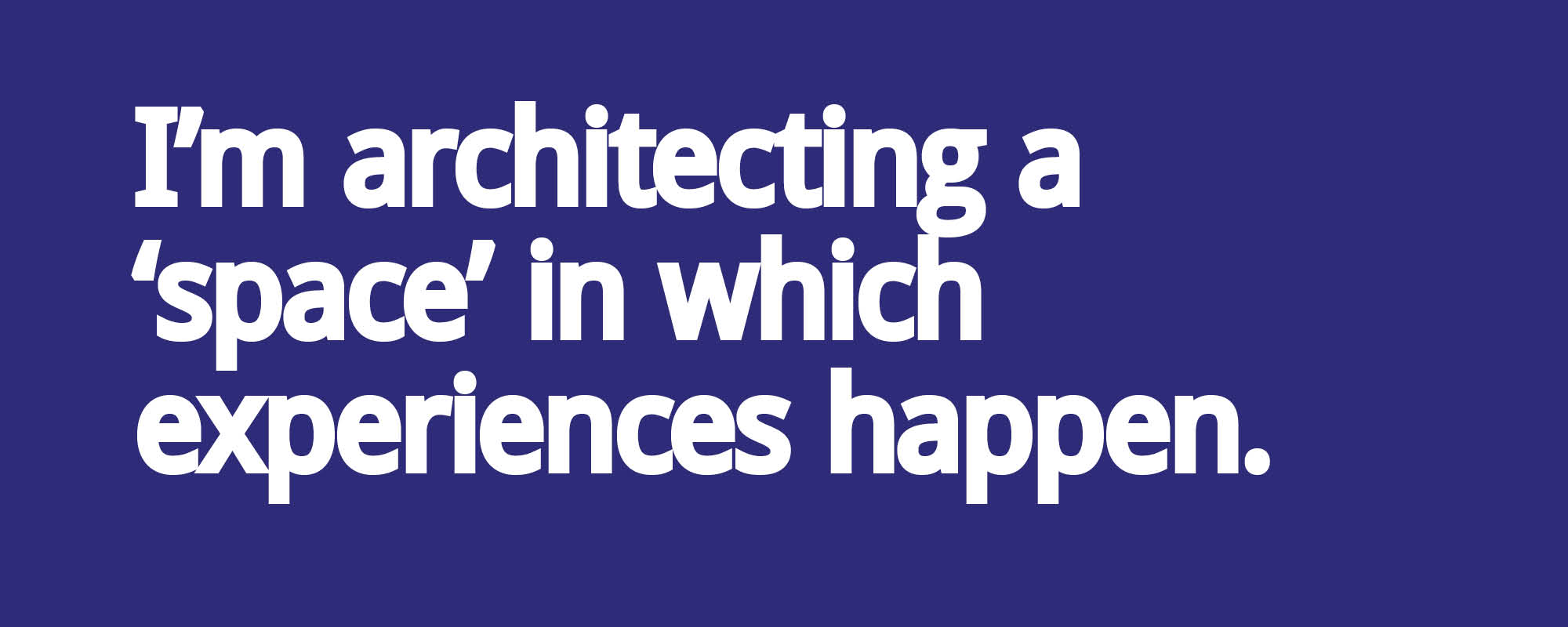I love words. I love the sounds they make and the shapes they form. I love the ideas they can inspire. I love words. Words, for me, provide the perfect balance of freedom and containment. I mention this because I recently read an interview I’d given and in it there was a word that gave me pause for thought. The offending word was ‘architecting’.
I’ll put my cards on the table, I think ‘architecting’ is a verb. But reading it, attributed to me, sitting in a sentence, making a statement, pulled me up short. And I remembered that old quote, “How do I know what I think until I see what I say”. There I was, saying ‘architecting,’ verbifying the final word of my job title. What did I mean?
How do I know what I think until I see what I say?
I meant that as one of 10 User experience architects in a team of over 100 User experience designers, I do something a little different to the majority. Using a different word to describe this different activity seems sensible, necessary. Words matter.
In the broadest sense design might be a practical method for managing ideas. I think UX architecture as a subset of design is a method of managing particular types of ideas — abstract ones. As Peter Morville claims, ‘the centre of information architecture is cognition.’ Often what I’m doing is thinking. I manipulate concepts just as much as I manipulate interfaces.
I always try to make my thoughts visible in words, diagrams, scribbles and facial expressions. I manage and communicate ideas. But the relationship between the ‘architecture’ I create and the artefacts and processes I follow as I ‘architect’ it are different. Do I design information architecture? Designers craft the interface (among other things). Technical architects define the infrastructure. Information architects occupy the messy middle.
The value that I bring to an organisation, project and team is different to that of a Designer. As Richard Saul Wurman said and Resmini and Rosati quote: “the creating of systematic, structural and orderly principles to make something work — the thoughtful making” is the stuff that I want to be known for. I’m not saying that UX designers are not thoughtful, systematic or structural in their thinking. I’m making a claim that these are prototypical properties of the thing I do. I want people to expect different things of me.
I want people to expect different things of me.
I wanted to use a word that hints that ‘architecting’ is a different type of design. I wanted something other than the more generic and widely contested label of ‘design’. I wanted something that smells more of thoughtful sculpting of abstract thoughts into concrete things.
But there’s something more too.
Nouns name thing. They contain and curtail. Verbs are made meaningful through their execution. I don’t love the word ‘architecting.’ But I love the fact that it forces me to consider the things that I do as I create information architecture. It nudges me away from ‘routine’ and towards a tighter focus on process.
I’m a big fan of the book ‘The Reflective Practitioner’ and will often trot out the story of the competent professional operating on a high, hard ground with confidence and precision, applying theory as practice. The manageable problems on that high, hard ground lead readily to solutions. They are low in uncertainty. A professional can be confident of their footing. There’s something routine to what we do up there.
Then there are the people struggling below the high-hard ground. They are covered in mud, mid-way across a swamp and having to invent new strategies, test, fail and iterate, reflect and succeed. Fog and uncertainty surrounds them. Their world is typified by change.
For the last few years I’ve been developing my understanding of what it is that I do. I’ve been trying to support others to do the same. I’ve been trying to work out when I’m on the high, hard ground and when it’s right to wander into the swamp to struggle and grow. We’re all faced with this choice from time to time. Schon describes the choice like this:
“Shall we remain on the high ground where we can solve relatively unimportant problems according to standards of rigor, or shall we descend to the swamp of important problems where we cannot be rigorous in any way we know how to describe.”
‘Architecting’ is not a nice word. If it’s onomatopoeic it suggests a rugged, jagged back-and-forth that’s not always helpful in a discipline driven by interrogating difference and asking the difficult question. The hardening of the ‘ch’ sound has a little brutality to it. I don’t like it as a word. But I struggle to find another that I like more to describe what I do.
By using a verb, a “doing word,” I like to think that maybe subconsciously I empower myself and the teams around me to adopt a more reflective, creative, playful and effective approach to the thing we do. Nouns codify practice into routine. They contain, label and limit. But great design (including information architecture) is dependent on an interplay between divergence and convergence — we need nouns and verbs.
I love words. I love being an information architect — doing what I do every day of the week. Sometimes that means that I’ll architect a space, system or statement. I might not always use the right words. But hopefully I’ll continue to reflect, ask questions and make meaning thoughtfully.
World IA Day is a global event celebrating information architecture. I sincerely believe that everyone can architect information to make meaning and tidy up messes. This is my defence of a word to use to describe the thing these people are doing. Learn more about World IA Day and the http://www.iainstitute.org.
This post was also published to Medium.

Leave a Reply